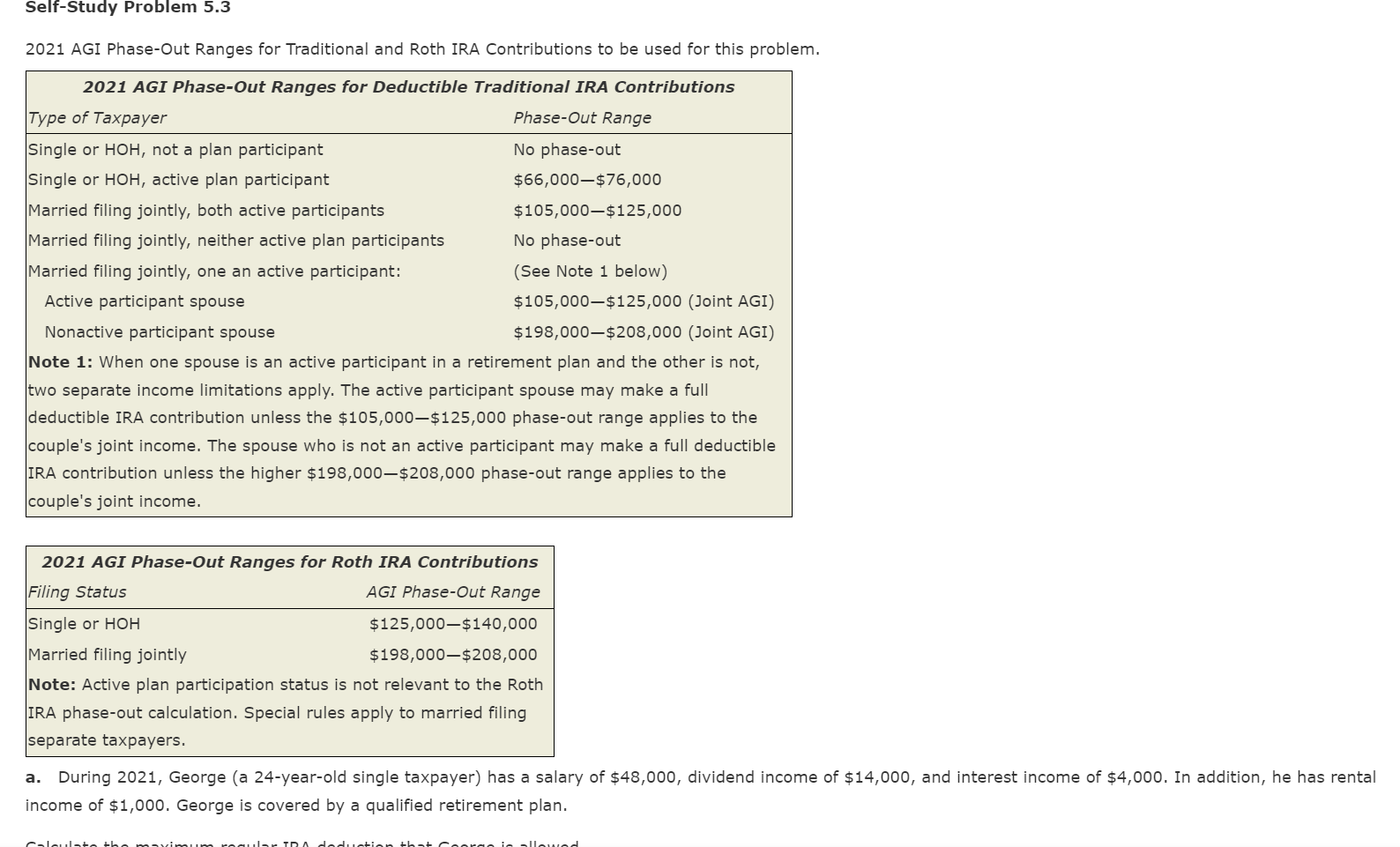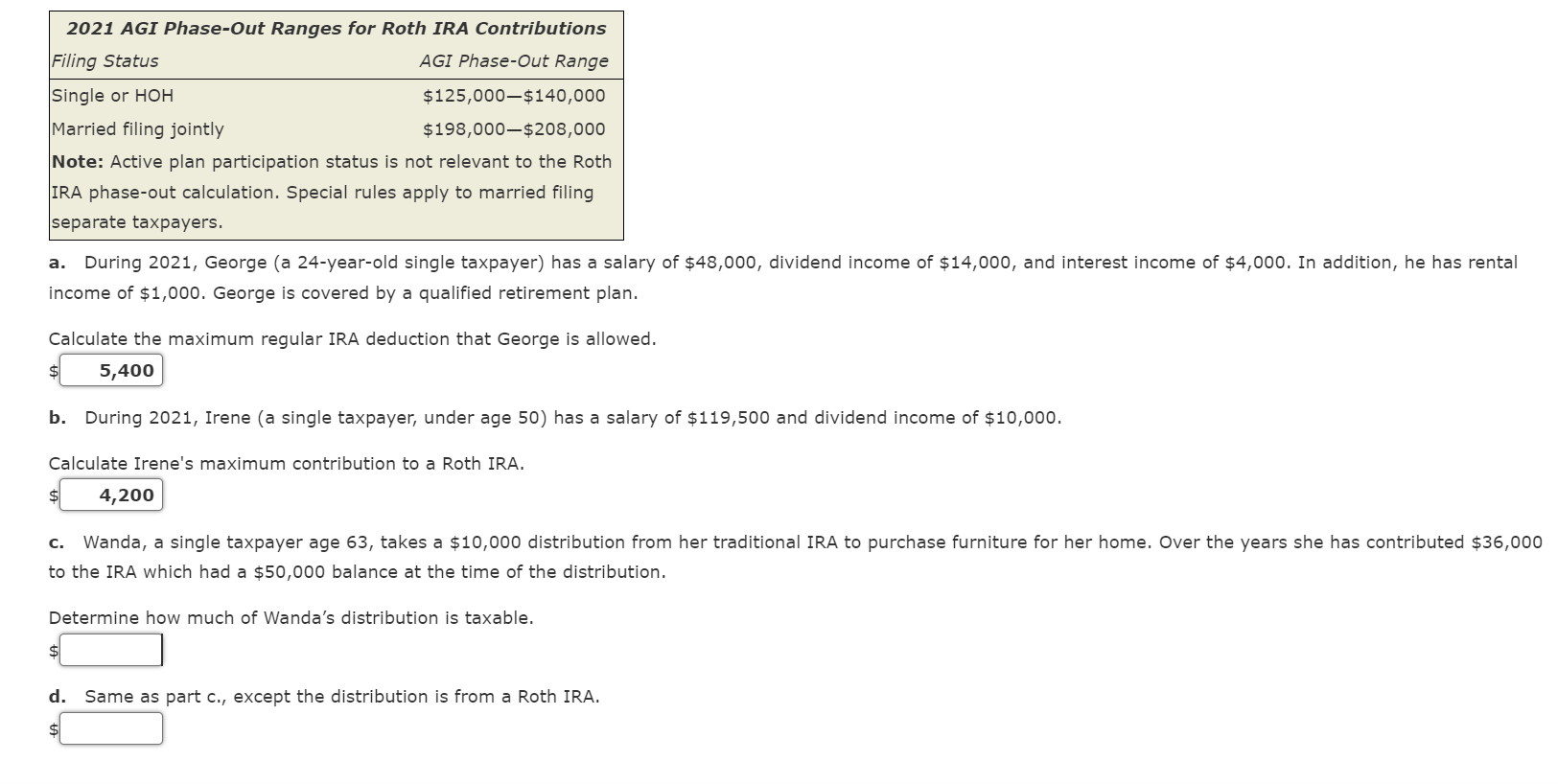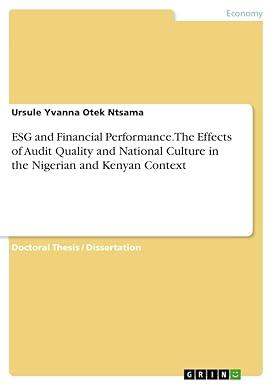

Self-Study Problem 5.3 2021 AGI Phase-Out Ranges for Traditional and Roth IRA Contributions to be used for this problem. 2021 AGI Phase-Out Ranges for Deductible Traditional IRA Contributions Type of Taxpayer Phase-Out Range Single or HOH, not a plan participant No phase-out Single or HOH, active plan participant $66,000-$76,000 Married filing jointly, both active participants $105,000-$125,000 Married filing jointly, neither active plan participants No phase-out Married filing jointly, one an active participant: (See Note 1 below) Active participant spouse $ 105,000-$125,000 (Joint AGI) Nonactive participant spouse $198,000-$208,000 (Joint AGI) Note 1: When one spouse is an active participant in a retirement plan and the other is not, two separate income limitations apply. The active participant spouse may make a full deductible IRA contribution unless the $105,000-$125,000 phase-out range applies to the couple's joint income. The spouse who is not an active participant may make a full deductible IRA contribution unless the higher $198,000-$208,000 phase-out range applies to the couple's joint income. 2021 AGI Phase-Out Ranges for Roth IRA Contributions Filing Status AGI Phase-Out Range Single or HOH $125,000-$140,000 Married filing jointly $198,000-$208,000 Note: Active plan participation status is not relevant to the Roth IRA phase-out calculation. Special rules apply to married filing separate taxpayers. a. During 2021, George (a 24-year-old single taxpayer) has a salary of $48,000, dividend income of $14,000, and interest income of $4,000. In addition, he has rental income of $1,000. George is covered by a qualified retirement plan. = ran in allowed 2021 AGI Phase-Out Ranges for Roth IRA Contributions Filing Status AGI Phase-Out Range Single or HOH $125,000-$140,000 Married filing jointly $198,000-$208,000 Note: Active plan participation status is not relevant to the Roth IRA phase-out calculation. Special rules apply to married filing separate taxpayers. a. During 2021, George (a 24-year-old single taxpayer) has a salary of $48,000, dividend income of $14,000, and interest income of $4,000. In addition, he has rental income of $1,000. George is covered by a qualified retirement plan. Calculate the maximum regular IRA deduction that George is allowed. 5,400 b. During 2021, Irene (a single taxpayer, under age 50) has a salary of $119,500 and dividend income of $10,000. Calculate Irene's maximum contribution to a Roth IRA. 4,200 c. Wanda, a single taxpayer age 63, takes a $10,000 distribution from her traditional IRA to purchase furniture for her home. Over the years she has contributed $36,000 to the IRA which had a $50,000 balance at the time of the distribution. Determine how much of Wanda's distribution is taxable. d. Same as part c., except the distribution is from a Roth IRA








